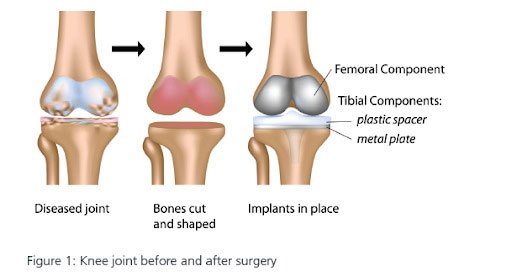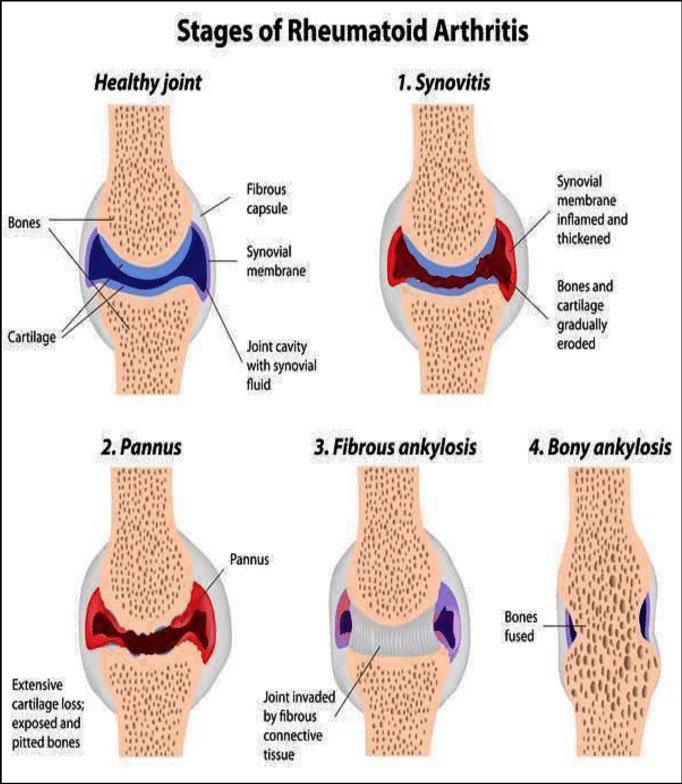- 1st floor, 28 Shiv Shakti Nagar, near Indo Bharat School, Nirman Nagar, Jaipur, Rajasthan 302019
- +91 9001740688
- Mon - Sat: 4:00PM - 7:00PM

Knee Replacement Surgeon in Jaipur
The knee is the largest joint in the body and having healthy knees is required to perform most everyday activities knee replacement in jaipur, knee replacement surgeon in jaipur.
The knee is made up of the lower end of the thighbone (femur), the upper end of the shinbone (tibia), and the kneecap (patella). The ends of these three bones are covered with articular cartilage, a smooth substance that protects the bones and enables them to move easily within the joint.
The menisci are located between the femur and tibia. These C-shaped wedges act as "shock absorbers" that cushion the joint.
Large ligaments hold the femur and tibia together and provide stability. The long thigh muscles give the knee strength.
All remaining surfaces of the knee are covered by a thin lining called the synovial membrane. This membrane releases a fluid that lubricates the cartilage, reducing friction to nearly zero in a healthy knee replacement in jaipur, knee replacement surgeon in jaipur.

Normally, all of these components work in harmony. But disease or injury can disrupt this harmony, resulting in pain, muscle weakness, and reduced function.
Cause
The most common cause of chronic knee pain and disability is arthritis. Although there are many types of arthritis, most knee pain is caused by just three types: osteoarthritis, rheumatoid arthritis, and post-traumatic arthritis knee replacement in jaipur, knee replacement surgeon in jaipur.
- Osteoarthritis. This is an age-related "wear and tear" type of arthritis. It usually occurs in people 50 years of age and older, but may occur in younger people, too. The cartilage that cushions the bones of the knee softens and wears away. The bones then rub against one another, causing knee pain and stiffness.
- Rheumatoid arthritis. This is a disease in which the synovial membrane that surrounds the joint becomes inflamed and thickened. This chronic inflammation can damage the cartilage and eventually cause cartilage loss, pain, and stiffness. Rheumatoid arthritis is the most common form of a group of disorders termed "inflammatory arthritis."
- Post-traumatic arthritis. This can follow a serious knee injury. Fractures of the bones surrounding the knee or tears of the knee ligaments may damage the articular cartilage over time, causing knee pain and limiting knee function.

When to Consider Surgery
It may be time to have knee replacement surgery if you have:- Severe knee pain that limits your everyday activities
- Moderate or severe knee pain while resting, day or night
- Long-lasting knee inflammation and swelling that doesn’t get better with rest or medications
- A bowing in or out of your leg
- No pain relief from NSAIDs or can't tolerate them
What is Total Knee Replacement?
A total knee joint replacement surgery is a surgical procedure in which painful or poorly functioning knee joint is replaced with artificial metal implants knee replacement in jaipur, knee replacement surgeon in jaipur.
During the procedure:- The orthopedic surgeon makes an incision on the front edge of your knee.
- After separating the muscles and the ligaments around the knee, your knee surgeon will gain access inside the knee capsule with the aid of specialized tools.
- After which, the damaged parts of the knee are removed and is replaced with new prosthetic components.
- Before your incision is closed an X-Ray will be taken to ensure that the new component of your knee is positioned correctly.
- Your orthopedic surgeon will close the incision with stitches and staples and temporarily leave a drain in place to remove the excess fluid.

Staples and sutures will be removed 2 weeks after surgery
You will be able to resume most of the activities within 3_4 weeks of surgery

Emergency Cases
+91 9001740688Opening Hours
- Saturday - Saturday: 4:00 PM - 7.00 PM
- Sunday: Will Be Closed
